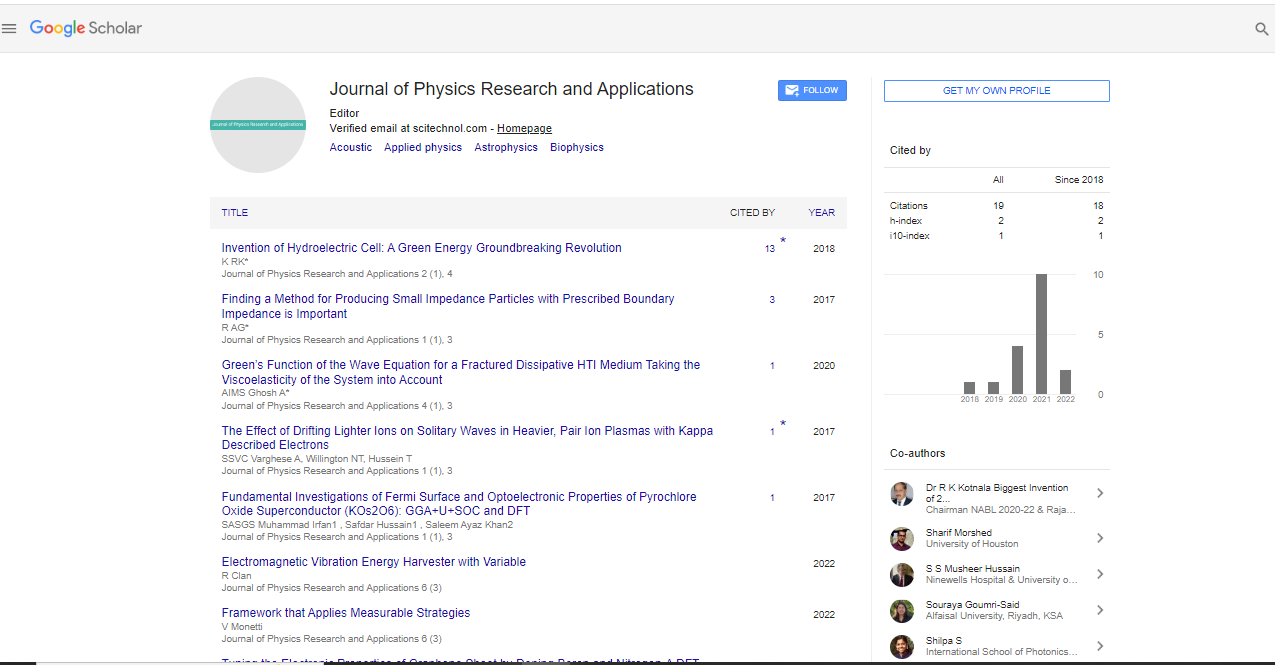Short Communication, Int J Cardiovasc Res Vol: 10 Issue: 7
Pulmonary Rehabilitation in Interstitial Lung Disease
Mrinmayee Koltharkar
Hinduja National Hospital & Medical Research Centre, India
Keywords: Cardiovascular
Abstract
Introduction: Interstitial Lung Disease (ILD) is a diverse group of over 150 disorders characterized by varying degrees of fibrosis and inflammation of the lung parenchyma or interstitium. At present, the available pharmacotherapeutic modalities are ineffective in stopping the natural course of ILD, have plenty of side effects and remain only as palliative measures making lung transplantation the sole modality to show benefit in terms of mortality. The need of pulmonary rehabilitation in ILD has only been recently realized. Much of the work on pulmonary rehabilitation work has been done on COPD and data has been applied to other chronic respiratory conditions. While ATS/ERS joint committee in their statement on ILD subgroup have given weak positive recommendation on pulmonary rehabilitation due to lack of strong evidence, as more research in this field is desired.
Aim: The aim of this study was to determine whether Pulmonary Rehabilitation (PR) is effective in improving the exercise capacity, dyspnoea scores and quality of life of the patients with Interstitial Lung Disease (ILD).
Methods: We have studied 26 consecutive patients diagnosed with ILD (idiopathic pulmonary fibrosis or non-specific interstitial pneumonia) who consented to undergo an individualized PR program including patient education and exercise training for 12 weeks with three sessions/week. Exercise training included endurance training (cycle ergometer and treadmill walking), strength training (weight cuffs, dumbbell), breathing and flexibility exercise (stretching) under a trained cardiopulmonary physiotherapist. Exercise capacity was assessed by six minute walk test (6MWT), dyspnoea score by Borg’s scale rating resting and post 6MWT and quality of life by SGRQ. Assessment was done in pre- and post-program.
Results: Out of 26 patients, 24 were able to complete the prescribed 12 weeks program. Of 26 patients, 10 patients had diagnosis of NSIP and rests were IPF. There were 10 males (38.5%) in the study. Mean baseline 6 MWD was 340 meters (± 47.21 SD) with mean post 12 week 6MWD of 387 meters (± 63.57). Mean improvement was 47 meters, 6 MWD is significantly increased (p<0.0001). Mean value of the baseline post 6MWT Borg’s scale rating was 2.57 (± 1.094 SD) with median value of three and range from 1-4. Mean value of the post 12 week post 6MWT Borg’s scale was 1.82 (± 0.983 SD) with median value of two, range of 1-2, was significantly reduced (p=0.0056). Mean baseline SGRQ scores were 50.28 (± 12.42 SD) with mean post 12 week SGRQ scores 36.90 (± 10.84) was significantly reduced (p=0.0013)
Conclusion: Pulmonary rehabilitation significantly improved the exercise capacity, dyspnoea perception and quality of life in the patients with ILD and should be considered as a standard of care for patients with ILD.
 Spanish
Spanish  Chinese
Chinese  Russian
Russian  German
German  French
French  Japanese
Japanese  Portuguese
Portuguese  Hindi
Hindi 
